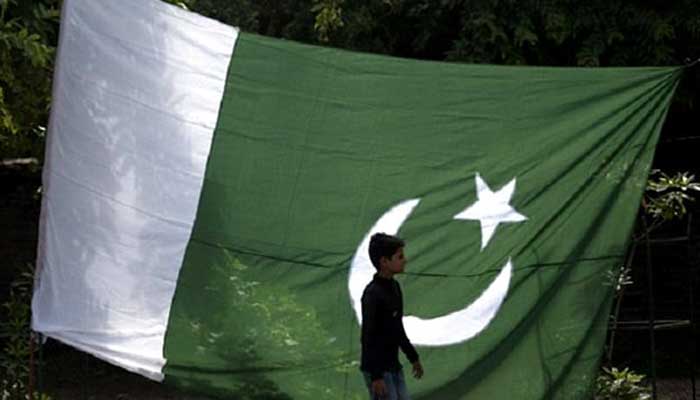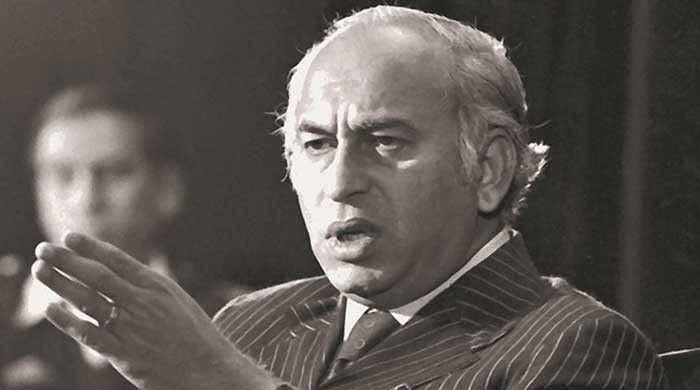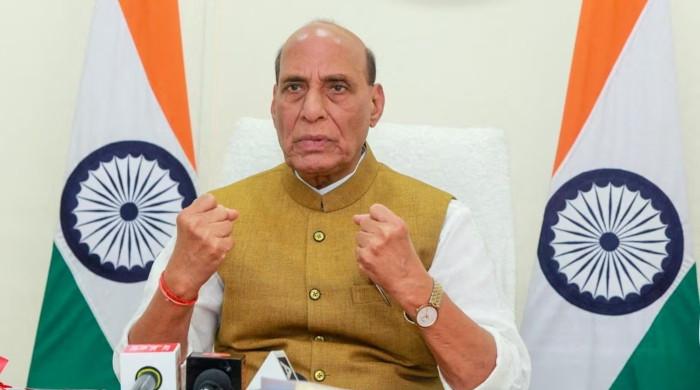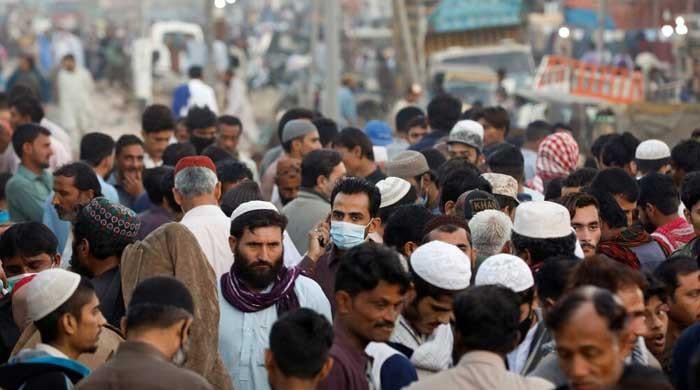Federalism at risk — Part II
Pakistan cannot grow with one of the highest direct tax rates in world for businesses, salaried employees
October 16, 2025

As I noted in Part I of this article ("Federalism at risk", October 9), critics argue that the 7th NFC allocated "excessive" resources to provinces and ultimately bankrupted the federation.
The claim doesn't survive the numbers. Provinces do not "get 60% of everything"; they receive 57.5% of the divisible federal tax pool, not of total federal inflows.
Major receipts — most notably the petroleum levy — sit outside the pool and are retained at the centre, even though this tax, which is not listed in the Federal Legislative List, fall in the provincial domain under our constitution.
The fairest way to test the "excessive-transfer" narrative is a like-for-like comparison. Take this year’s budget baseline and rebuild the pool as if the 5th NFC logic still applied: exclude customs duty from the shareable base (as under the 5th) but include the petroleum levy (in substance a sales tax on goods, which is part of the divisible pool).
For FY2025–26, provinces are budgeted to receive about Rs7.99 trillion from the divisible pool plus Rs0.22 trillion in straight transfers (royalties etc), totalling Rs8.21 trillion. With GDP around Rs120 trillion, that equals 6.84% of GDP.
Let us now work out the divisible pool implied by the 57.5% provincial share: Rs13.89 trillion. Now apply the 5th-NFC lens: subtract customs (Rs1.55 trillion) and add the petroleum levy (Rs1.47 trillion) to get an adjusted divisible pool of Rs13.81 trillion. Deduct 2.5% collection charges to Rs13.46 trillion, then split 80:20: provincial entitlement comes to Rs10.77 trillion – 9.0% of GDP – versus Rs8.21 trillion (6.84% of GDP) actually budgeted this year.
In other words, under an honest like-for-like base, provinces would have received more, not less, under the 5th NFC formula. The 7th NFC did not ‘over-transfer’; it set a pragmatic share, correcting the rollback engineered under the 6th NFC by unelected caretakers.
The federal-provincial shares debate is inseparable from what those resources finance: schools, hospitals, policing, water, sanitation and local services — overwhelmingly provincial functions. Pakistan's social investment is already perilously low — education 0.8% of GDP, health 0.9%, a combined 1.7% — are one of the lowest in the world.
At these levels, learning poverty persists, stunting remains entrenched and primary care, immunisation and disease prevention stay fragile.
This is one of the major reasons for Pakistan’s dismal HDI rank, which has slipped to 168. Any squeeze on provincial space cuts exactly where the country needs improvement, leading to deepening social and economic decline and further erosion of trust.
None of this excuses weak provincial performance. Outcomes are uneven and often inadequate. But the federation’s record is hardly better: loss-making SOEs, circular debt despite region-high tariffs, development portfolios crowded with economically unviable schemes and a tax mix that punishes compliance while rewarding informality. When both tiers underperform, concentrating power farther from citizens is the least rational remedy.
The 18th Amendment removed the Concurrent List to align responsibility with resources and eliminate duplication; that alignment was never completed because required closures/mergers of overlapping federal ministries and agencies largely didn’t happen. The job now is to make devolution work, not reverse it.
What should be done — crisply and in sequence: One, hold the constitutional line. Article 160(3A) is explicit: the provinces’ share under a new Award shall not be less than under the previous Award. Stop relitigating the firewall; focus on outcomes.
Two, add a small, transparent performance top-up over the guaranteed shares, released only against independently verified gains in citizen-facing services: school attendance and learning; immunisation and maternal health; safe water and solid waste; response times and crime reduction. Publish quarterly dashboards; reward improvement, not paperwork.
Apply the same discipline at the centre by tying parts of discretionary releases to progress on loss reduction in energy, SOE restructuring/privatisation milestones and development projects through Public Private Partnerships. Incentives, not edicts, change behaviour.
Three, make local governments more effective. Depoliticise and empower PFCs with independent members; move to predictable, formula-based transfers to local governments with a modest performance pool on top. Robust local governments are in the interest of provinces to provide local-level services for the people.
Four, fix the tax architecture — lower rates, widen the base, digitise enforcement.
Pakistan cannot grow with one of the highest direct tax rates in the world for businesses (once super tax, WPPF and WWF are counted) and salaried employees, and a broad 18% sales tax that makes formal firms uncompetitive against the informal economy.
The federation must rationalise customs, income tax and FED and place sales tax on goods on a pro-investment footing. Provinces must step up on sales tax on services, agriculture income tax, and Urban Immovable Property Tax via valuation reform, coverage expansion, automation and due-process enforcement. The goal is to grow the productive economy so that both tiers’ envelopes expand sustainably.
Fifth, stop the drift on NFC timing. The constitution expects an Award every five years; we’re now 15+ years past the last one. Include independent experts alongside federal and provincial representatives and establish a permanent NFC secretariat publishing common baseline data quarterly so negotiations are based on reliable data and evidence.
Finally, set outcome-linked spending anchors so we don’t lose the plot on human development and core capacity. Over 3–5 years, aim nationally for 3–4% of GDP for education and 2–3% for health, recognising most of this sits with provinces. Within provincial budgets (ex-debt), protect indicative shares for education (25–28%), health (14–16%), law & order (10–11%), local governments & councils (10–12%), population planning (2–3%) and roads/transport/infrastructure (8–10%), with adequate budget for operations and maintenance existing assets and disbursement conditioned on independently verified service levels.
The constitutional case is unchanged: the federation is strongest when services are closest to people – and funded. The arithmetic strengthens that case: under a fair, like-for-like comparison, provinces would have received more, not less, under the 5th-NFC logic this year (9.0% of GDP) than they actually will under current arrangements (6.84%).
Let money follow results. Empower local governments. Lower and simplify taxes while expanding the base. Cut avoidable costs to get more from less. Do this, and the federation grows stronger as the provinces grow stronger. Do the opposite and we re-enter the old cycle: recentralise, blame the provinces and watch outcomes stagnate while unity frays. We have tried that before — at terrible cost.
Concluded
The writer is a former managing partner of a leading professional services firm and has done extensive work on governance in the public and private sectors. He posts @Asad_Ashah
Disclaimer: The viewpoints expressed in this piece are the writer's own and don't necessarily reflect Geo.tv's editorial policy.
Originally published in The News












